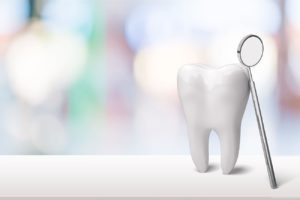A majority of people have gotten a cavity before. This is an early form of tooth decay, and a dentist can treat the problem with one easy procedure. A cavity can worsen without prompt dental intervention, leaving patients with extensive structural harm.
But tooth decay is only one form of enamel damage. Enamel can erode for many reasons, affecting a patient’s risk for decay and other dental dangers.
Though these two issues seem similar, they pose different risks to your oral health. Read on to learn about the connection between tooth decay and enamel erosion as well as the differences between these dental problems.

How Does Tooth Enamel Erode?
The enamel refers to the durable outer shell of your tooth which covers vulnerable inner layers. Though the enamel withstands everyday wear and tear from chewing and biting without issue, it can erode over time. This may occur for many reasons, even factors outside your control like aging.
But a common cause of enamel erosion is consuming acidic substances. Highly acidic foods and drinks, like citrus fruits and juices, will eat away at your teeth. Sugar becomes acidic when you consume it and will have the same effect on your smile.
To preserve your tooth enamel, you should limit these items in your diet. You should also practice good oral hygiene. This removes harmful residues, like lingering food particles and plaque, from your smile before they can hurt your teeth.
Once the enamel erodes, it cannot regrow. You will need treatment from a dentist to restore your dental structure and replace lost enamel. A dentist can rebuild the shape of your teeth and protect them using a dental crown.
Enamel erosion can leave you with noticeable symptoms too. You might feel tooth sensitivity when the interior of teeth is exposed. There might also be some discoloration in the weakened parts of your tooth.
What Is Tooth Decay?
Tooth decay refers to a type of damage to the tooth enamel. It happens when bacteria penetrate the enamel and starts to eat away at the tooth. It is a type of erosion to the enamel and becomes more likely if the enamel is already weak.
A cavity is a form of tooth decay, and your dentist treats the problem by drilling away the damaged part of the tooth and filling the resulting hole with composite resin. However, if you do not treat a cavity, the decay will progress deeper into the tooth.
A dentist can still treat it, but you might need a dental crown to cover this larger damaged part of the tooth. Symptoms of tooth decay include pain, dark discoloration, and bad breath.
Talk to your dentist if you have concerns about your dental structure. Pain of any kind is abnormal and should warrant evaluation from your dentist. This dental damage will not go away on its own and will need treatment from a professional.
